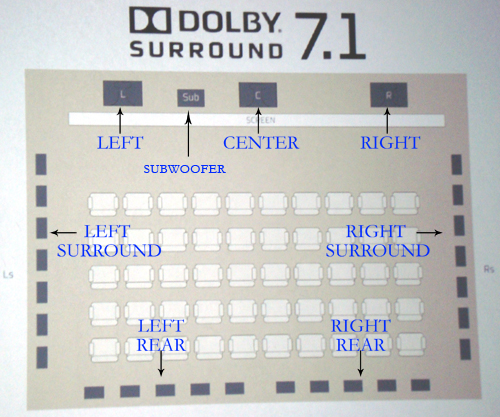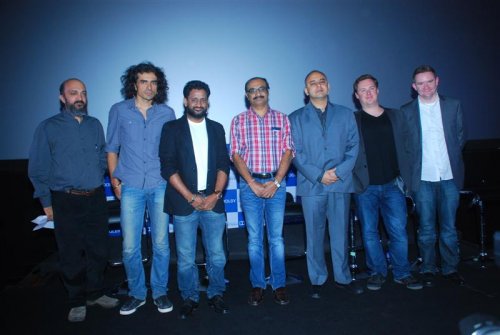
Dolby Laboratories India recently hosted the event ‘Dolby Surrounded’ bringing together leading film makers, sound experts & content creators across Hollywood and Bollywood in a panel discussion about innovation in cinema sound and highlighted the latest trends in cinematic audio.
“Sound is a global language” – Resul Pookutty
As cinegoers, one rarely appreciates the importance of sound – let alone the quality of sound – during a movie. The focus, naturally, is on the visuals with the background score merely being part and parcel of the entire package. I ask you, dear readers, when was the last time you consciously paid attention to the sound effects during a movie?
Think sound effects, think Dolby.
Dolby? Hmmm. The name sounds familiar right? Dolby surround sound? Dolby digital? Dolby home theatre? Yes – you’ve seen the trademark double D symbol at cinemas, in commercials, huge overhead posters etc. But what is Dolby exactly?
ABOUT DOLBY
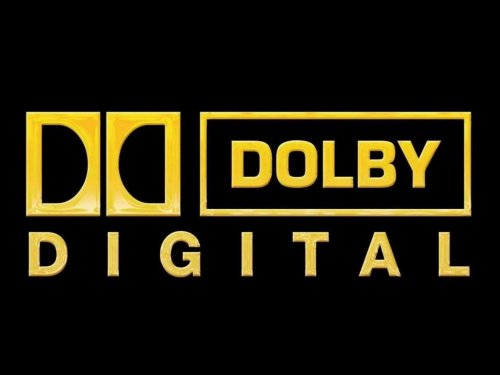
Dolby Laboratories is the global leader in technologies that are essential elements in the best entertainment experiences. Founded in 1965 and best known for high-quality audio and surround sound, Dolby creates innovations that enrich entertainment at the movies, at home, or on the go.
THE PANELISTS
Imtiaz Ali

Imtiaz Ali is currently amongst India’s leading film makers. He’s the man behind the huge blockbusters Jab We Met, Love Aaj Kal & the more-recent Rockstar. He has been a part of the industry for over two decades now.
Resul Pookutty

Resul Pookutty is a prominent Indian film sound designer, sound editor and mixer. Along with Richard Pryke & Ian Tapp, he won the Academy Award for Best Sound Mixing for the globally-acclaimed film Slumdog Millionaire. He has worked in Hollywood, Hindi, Tamil & Malayalam films.
Will Files

Will Files is a leading Hollywood sound editor, designer & mixer. He has worked on many international films such as Mission Impossible – Ghost Protocol, The Tree of Life, The Smurfs, Madagascar 2 – Escape 2 Africa, The Simpsons Movie etc.
Stuart Bowling

Stuart Bowling is the Worldwide Technical Marketing Manager at Dolby Laboratories.
Anup Dev
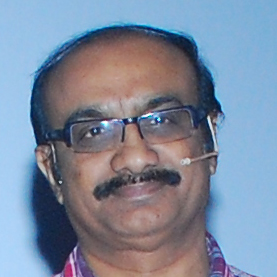
Anup Dev is also an Indian film sound designer, sound editor and mixer. He has worked on movies such as RA.One, 3 Idiots, Ghajini, Omkara, Krrish, Sarkar, Veer-Zaara etc.
Kamal Gianchandani
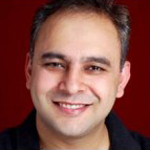
Kamal Gianchandani is the President at PVR Pictures Ltd.
DOLBY SURROUNDED – THE EVENT
Dolby Surrounded primarily served as an introduction to the world of enhanced surround sound effects in the form of 7.1 channels as well as the importance of surround sound.
Stuart Bowling said, ”Initially, when surround sound was introduced, only 26 theatres globally were equipped to handle this technology. Now it is available in 54 countries and over 3400 7.1-enabled screens. Over the years with the introduction of 3-D in movies, which allowed the characters to come out of the screen, sound underwent an evolution to immerse the audience into an equally enthralling experience – what we call as 7.1 today. This allowed the film-makers to play the sound all around you with new ways of matching the content on the screen with the focus on sound. The perspective of sound can be changed now according to what is playing on the screen. All that is required are new audio cables and updation of the cinema processor to accept this technology – the level of calibration of sound remains unchanged.”
[youtube_video id=Jw4qk6l4K38]
Now what is this concept 7.1 channels, you ask?
In layman’s terms, there are, in totality, seven sets of speakers and one subwoofer – using which sound is propagated. In a typical home theatre system, a 7.1 configuration would look like this:
Similarly, in a theatre, the surrounding speaker configuration would be:
That’s a lot of speakers to hear from – and trust me, the experience is completely 180 degrees from what you’d encounter in a non-7.1 technology equipped theatre.
How can I vouch for this, you say?
It’s simply because when multiple audio and audio-visual sequences are presented to the audience, demonstrating the sound effects & music in a conventional 5.1 channel setting versus a 7.1 channel setting, one can really FEEL the difference. It is surreal, almost.
Sequence 1
Consisting of 3 only-audio clips – a simple conversation between two people, a musician playing the violin with a bee buzzing nearby & a narrative clip within an airplane – one could easily distinguish the placement of sound in the aforementioned settings. For e.g. during the 2nd clip featuring the musician, in a 5.1 setting, the sound of the musician and the bee merged as one without accentuating the movement of the bee. In contrast, in the 7.1 setting, one could feel the bee making a 360 degree revolution around the musician – thus, allowing the listener to understand the musician’s misery.
Sequence 2
An audio-visual demonstration of the utilization of 7.1 surround sound in Hollywood took place. Two clips – first being a mash-up of clippings of various animated Hollywood movies such as Toy Story 2, Finding Nemo, The Incredibles etc. and second, a 5-minute sequence from Mission Impossible : Ghost Protocol – were played. This allowed the audience to understand how the movie-watching experience can be amplified using this technology.
For example, the sequence in Toy Story 2 where Barbie & her friends are driving a toy car in a store on a tour and they crash into a jawbreaker vending machine, thus spilling all the bouncy balls. In a 7.1 setting, the landing of each individual bouncy ball was distinguishable. Can you imagine it? If not, maybe this example will help.
[youtube_video id=kX4ABefuIQg]
A 5-minute clipping from Mission Impossible : Ghost Protocol was played next. Long story short, the rustling of leaves, the sound of footsteps, the barks of a dog, the beeping of the GPS device – every single sound was audible from a different speaker as per it’s relative positioning within the scene – it was as if we were experiencing it first-hand from within the scene itself.
[youtube_video id=Kxrndgt7gIY]
Sequence 3
Coming back to our own turf, we were shown the train-sequence from RA.One & the theatrical trailer of Rockstar. Ah – this was more personal and easily identifiable with. Once again, every nuance and pronunciation of the words ‘Sadda Haq’ from its namesake song in Rockstar was clearly distinguishable.
[youtube_video id=BWrqjz7p8d8]
[youtube_video id=pBud7byobX0]
THE DISCUSSION
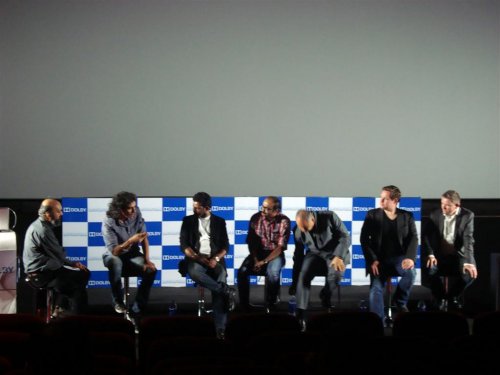
After the introduction of this this technology, the panelists segregated for a short discussion to give their point of view on surround sound, sound designing and it’s importance.
Q) What was the first film you distinctly remember hearing in surround sound?
Resul – For me, it was Sholay, obviously not in the truest sense of modern day sound, that showed how sound can change with narration. A more recent film would have to be 1942 – A Love Story, when I actually got into the sound.
Anup– I remember watching Maine Pyar Kiya and appreciating the sound quality in it – especially, the sound of the pigeons in the song ‘Kabootar Ja Ja’ which was very realistic. But surround sound, in my opinion, started truly being exploited from the movie Daud onwards in 1997 – how to enhance the impact of a scene with sound.
Kamal – For me, it has to be Titanic. The impact of the waves and the collision with the iceberg were very realistic in my memory.
Will – L.A. Confidential. Certainly not my first memory but definitely my strongest memory from a professional viewpoint. They were simple technical maneuvers but they worked very well in the context of the movie.
Stuart – It would be Batman Returns for me – especially the opening when the bats come out of the cave – It was very startling to hear that amount of definition as if bats were flying around the auditorium.
Q) What is the role of sound in your cinema?
Imtiaz – Very honestly, it was only after my 3rd film, Love Aaj Kal, that I started to understand what sound can do. I understood the significance of the term audio-visual in that order – the first impact would be of sound and then of the visual. Sound can easily ‘take you there’ and give you that experience at a very economical cost. To create the same effect visually would cost me much more. I’m being crass in the distinction here. Sound can be very distracting too. A visual jerk/inaccuracy is tolerable but a sound inaccuracy – like a sub-woofer blasting – can take away the joy of the movie completely. I like to be hands-on with the sound in my movie – there’s so much you can do with sound and you don’t even have to focus in the theatre. You can be drawn into a journey without realizing it and develop a high emotional quotient. And all this is possible due to the sound arrangement, placement and mixing.
Resul – I’m responsible for the other bad stuff as well. In simple terms, take the Mission Impossible clip played right now. The 5-minute long clip for me was a sound narration for me. The sound played out the story brilliantly as if you were there. In Bollywood, most of the time, we’re not left with enough space to recreate a similar setting where the movie is being narrated with the help of sound. I think we are very impatient as film-makers and we underestimate our audience and we are less convinced about what to make. I think that creates a very locked situation in our craft.
Anup – We watch Hollywood movies and really appreciate the impact of sound there. But in Bollywood films, we don’t get sufficient time which is a major drawback. Hollywood technicians are mixing the songs by understanding the dynamic range of sound in the movie which we are lacking in. I’ve worked with some of the biggest names in over 28 years now and I try my level best to create this dynamic range for our movies – but sometimes I have to adhere to the producer or director’s wishes. To achieve the level of Hollywood, we really have to study the soundtrack and then only achieve a high quality of sound.
Q) By and large, how much time is required for sound post-production and how much is available to you?
Will – For Mission Impossible 4, we did pre-mixing for a month and then final mixing for another month. I believe the biggest difference here is in how much time we get to prepare for the mixing – which is about 3 months for this movie before we did the final mix. For the most part, additional preparation time is the key for a great final product.
Anup – If we are lucky, sometimes we get 15 – 20 days to finish our final cut. Any more time is seriously a luxury.
Resul – I’ll give you an example for your question – For Ra.One, by the time we were working on the 3rd reel of the movie, the film-makers had started selling the tickets! For the final reel, I got altogether 6 hours. Agreed we got sufficient time to prepare, but the biggest achievement for me in RA.One is that it has visual sounds. But we didn’t get the time to put it together well. Due to time constraints, at one point in time, we were working for 20 hours a day. One should get sufficient to see the print, and come back to it in case of corrections. In Black, I got 60-70 days of sound design time and one month for finalizing which was good enough – and the result is for all to hear. We really have our hands tied due to the time constraints by the film-makers. But you can’t blame them because they’re riding on so much money. I understand everyone’s perspective but the major fault lies in the conceptualization stage which is very weak.
Imtiaz – Sometimes the technicians might get enough time as that of Hollywood, sometimes it might be otherwise – there’s no standard for such thing. But substantiating Resul’s point, the major flaw is the lack of vision. As a film-maker, from my 3rd film onwards, I started visualizing how I wanted the sound to play in my movie sequences – and on-the -set we used to discuss multiple options for a shot to be taken from the sound perspective. What would enhance the shot? Where could we make it more realistic? That really helped us in the long run in the final mix of sound designing since we already had a vision. I realized whenever I had the sound design clear in my mind, those scenes turned out to be very good.
Q) Will, Do you get involved during the conceptualization stage of a film?
Will – I love to get involved during the scripting stage itself and discuss with the directory, his expectation of the sound design and how the film will sound before the film is shot. That is really helpful. On a practical level, I then start to experiment with sound and go about recording the sound as per the director’s vision. On an emotional level, these conversations are useful to understand how the whole thing will ‘feel’ – even if it’s just a rough sketch, something they can live with and use in their scripting and shooting. I record as per what I feel the movie should sound like and they then pick their choice. In this way, the sound is more in-sync with the movie.
Take a look at Imtiaz Ali’s thoughts on sound and its importance:
[youtube_video id=x7A7eQ1PBH0]
PARTING THOUGHTS
An undeniable fact is that sound is grossly under-estimated by the cinegoers. As the panelists agreed, sound can make or break a movie. I repeat my first quote, “Sound is a global language” – Resul Pookutty. With modern-age technology enhancing by the day, film-makers have now realized the growing importance and significance of a good sound design in a movie. Higher importance and focus on future sound design combined with innovative 7.1 surround sound technology will guarantee an aural revolution in the near future for sure.
Stay tuned to www.highonscore.com for regular musical updates.
Hark ye, tweeps! Follow the musical force on Twitter @highonscore
Follow Shresht Poddar on Twitter @shreshtpoddar

